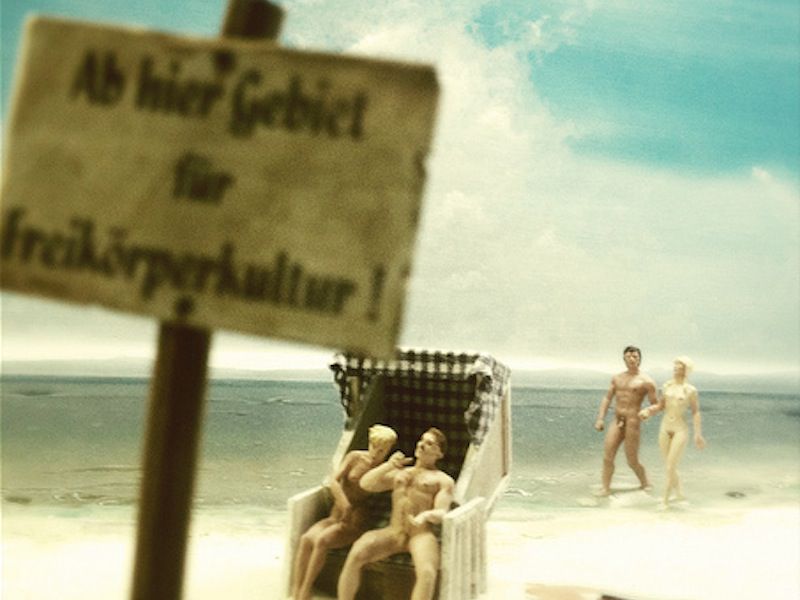This article was originally published in Spanish in El Mercurio
On the banks of the Spree River, behind Berlin’s massive cathedral, there’s a museum dedicated to the German Democratic Republic (GDR)—better known as East Germany. It opened nearly seven years ago and, with half a million visitors in 2012, it has become one of the busiest tourist sites in all of Germany. Featuring interactive exhibits, it offers the experience of daily life under one of the most successful socialist regimes in history—a nation that became the ninth most powerful economy in the world before disappearing twenty-three years ago.
Among the displays are miniature re-creations of the prefabricated buildings erected by the GDR following the destruction of World War II. Visitors can open the models’ tiny doors and read about everything from social and political life to the most ordinary details of daily living such as the furnishings and appliances available to East German citizens. They can sit inside a Trabant, the popular car affectionately known as the Trabi; owning one was the cherished dream of many East Germans, but even if you had the requisite political credentials, you might wait up to sixteen years for delivery. Important government officials traveled about in more pretentious vehicles, the pinnacle of which was the Volvo limousine. This underscored the quip in Orwell’s Animal Farm—a book banned by the GDR—that all people “are equal, but some… are more equal than others.”
The GDR response was to create its own brand of jeans, which are on view in the museum. They’re beyond ugly.
Museum-goers can also visit a life-size model of a typical apartment in one of the GDR’s huge housing complexes, which offered little variation in façade and interior décor. In addition to government-issued housing, many party officials built small dachas or country homes. The regime frowned upon but came to tolerate this kind of individualism, which helped to stem flight from the GDR. (Before the Berlin Wall was built, more than two and a half million East Germans escaped to the capitalist West.)
Fashion also conformed to central planning, yielding little variety in dress. Although the regime forbid television programming from the other side of the wall, broadcasts inevitably got through, exposing East Germans to Western-style clothing, which created social turmoil. For example, a teenager might ask relatives in West Germany to send over American blue jeans, but wearing them could be seen as a betrayal of socialist ideals, given the Cold War tensions. The GDR response was to create its own brand of jeans, which are on view in the museum. They’re beyond ugly.
120 miles of GDR archives attest to the normalcy of life under ongoing surveillance. Most of the documents are utterly banal: spy reports on private lives passing without incident.
These are only minor, quotidian details, but considered together in the context of the museum, they give the impression that life in the GDR simulated life in a developed country in the 1970s. It was possible to get an education, earn a living, start a family, and rise up in your own profession. If you rose up in the Party, it was also possible to achieve a higher standard of living than the typical East German. Additionally, there were a few generalized advantages to the system, including generous social services like free education and universal health coverage. In short, you could achieve a semblance of happiness in East Germany so long as you didn’t challenge the idea that it’s normal to live in a dictatorship.
Yes, that strange brand of “normalcy” was another achievement of the regime. It became normal to have more than 250,000 political prisoners in a country of 16 million people. It was normal for the state police, the infamous STASI, to have 91,000 officials and, more importantly, 170,000 informers and snitches actively spying on their neighbors. This was normal because the majority of the population came to believe it was okay to be spied upon.
This “normalcy” without liberty is undoubtedly the highest aspiration of all totalitarian regimes.
120 miles of GDR archives attest to the normalcy of life under ongoing surveillance. Most of the documents are utterly banal: spy reports on private lives passing without incident. The extent to which such espionage was conducted ad hoc was documented by historian Timothy Garton Ash in his 1997 book The File and dramatized in the 2006 film The Lives of Others. And though an anonymous informant could denounce a normal life for not being “sufficiently socialist,” the majority of East German citizens were never denounced. Most were simply spied upon, not interrogated in dungeon cells or shot trying to scale the Berlin Wall—though they would have been had they criticized the scarcity of goods or the privileges of those in power, or tried to escape.
This “normalcy” without liberty is undoubtedly the highest aspiration of all totalitarian regimes. The Spanish and Latin American right wing dictatorships of decades past sought something similar. The achievement of this strange German museum lies in showing us that liberty is the most subtle of human rights. To attain it is extremely difficult, but to lose it can come to seem “normal.”

